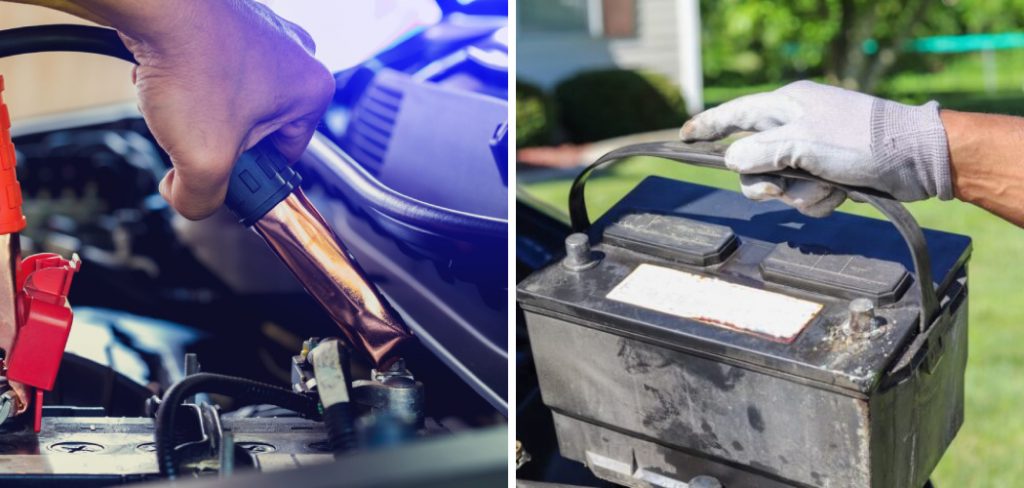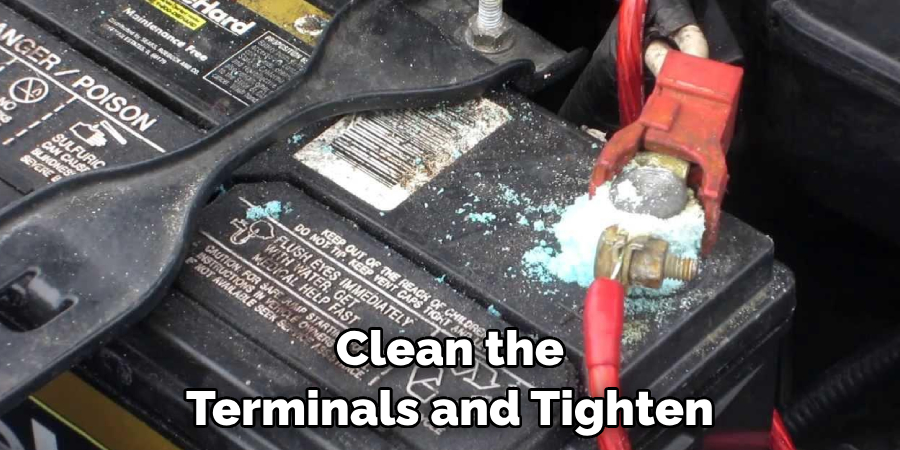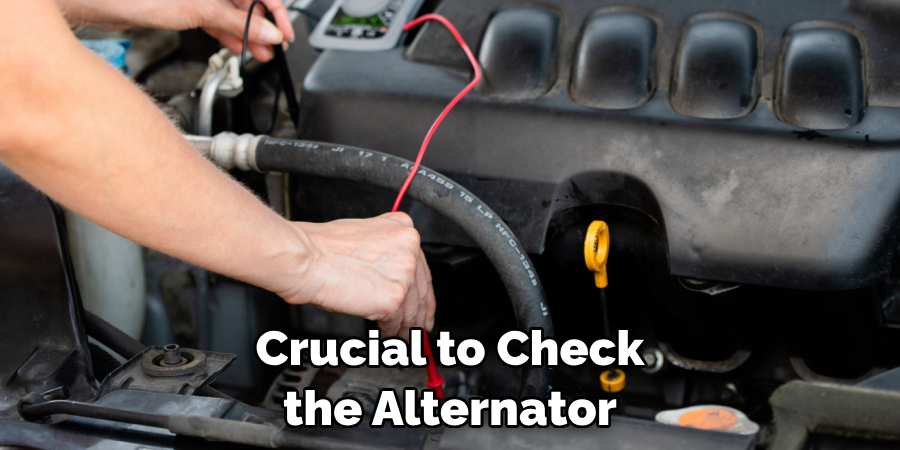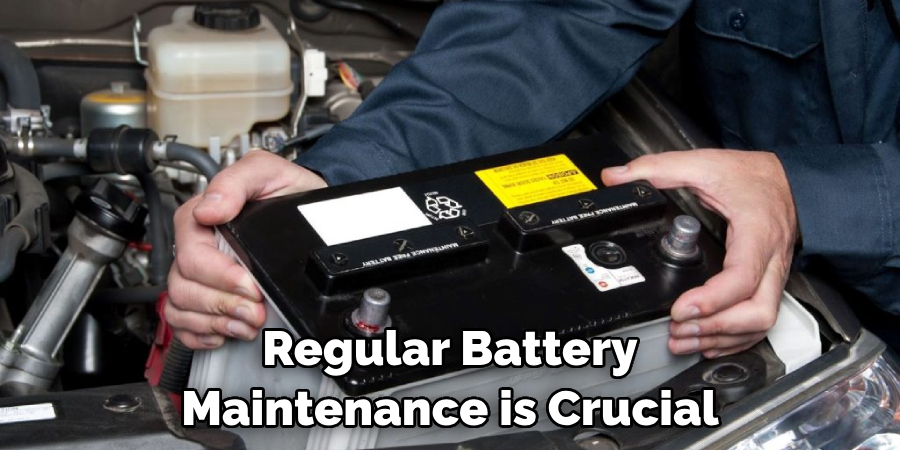One cold winter night, I awoke to complete darkness. My alarm clock was blank. No light came from the stove. I opened the front door and saw nothing but blackness. Then I realized with dread – that my car battery had died entirely. I knew at that moment I was in for a long, cold walk to start my journey to get help.

And that’s why I’m writing this post today – to share some tips I’ve learned over the years about how to fix a car battery that doesn’t hold its charge. By the end of this post, you’ll know how to fix a car battery that doesn’t hold charge and some effective remedies to try that might save you from an unexpected trek through the night.
Let’s start addressing the number one reason batteries fail to hold power.
Why Won’t My Car Battery Fully Charge?
The top reason for a car battery to hold an insufficient charge is sulfation. Sulfation occurs when lead sulfate crystals form on the battery’s plates, reducing its life span and ability to receive and hold a charge. If you’ve ever left your headlights or interior lights on overnight, you have experienced this issue firsthand.
Additionally, extreme temperatures, overcharging, and lack of use can also contribute to sulfation. Before running out to buy a new battery, it’s worth taking the time to revive your current one.
There are ways to combat sulfation and revive your car battery. Keep reading to learn how.
What Will You Need?
You don’t need a lot to fix your car battery. Here’s what you’ll need:
- A pair of thick gloves (just in case something goes wrong)
- A good set of screwdrivers
- Some baking soda
- A clean rag or cloth
- Distilled water
Once you’ve gathered these items, it’s time to tackle the problem at hand.
10 Easy Steps on How to Fix a Car Battery That Doesn’t Hold Charge
Step 1. Check the Battery Cables
The first step in diagnosing a car battery that doesn’t hold charge is checking the cables. If the wires are corroded or loose, they may prevent the battery from charging correctly. To fix this issue, you should clean the terminals and tighten all connections. You should also check for any signs of damage to the cables and replace them if necessary.

Step 2. Check for Internal Damage
If there is no visible damage to the battery cables, you should check for any internal damage to the battery itself. This can be done by using a multimeter to measure the battery’s voltage output. If it is lower than 12 volts, there may be an issue with one or more of its cells that must be addressed.
Step 3. Recharge or Replace the Battery
Once you have identified any potential issues with your car’s battery, you must decide whether it needs to be recharged or replaced entirely. If it is low on charge, you can use a trickle charger or jump starter to bring it back up to total capacity without damaging it further. However, if internal damage or other issues cannot be fixed, it may be time for a new battery altogether.
Step 4. Cleaning the Battery
Another common issue that can cause a car battery not to hold a charge is build-up on the battery terminals. Corrosion, dirt, and other substances can interrupt the connection between the battery and the cables. Use your baking soda, a bit of water, and your clean rag to clean the terminals. Make a paste with the baking soda and water, apply it to the terminals, let it sit for a few minutes, and then wipe it off with the rag. Afterward, reconnect the cables and see if it improves the battery’s ability to hold a charge.
Step 5. Check the Alternator
After you’ve cleaned the battery terminals, it’s crucial to check the alternator. The alternator is responsible for recharging the battery while the car is running. If it’s not functioning correctly, the battery won’t receive the power it needs to recharge, even if the battery itself is in perfect condition. You can use a multimeter while the car is running to test the alternator. Your alternator is likely in good shape if the reading is between 13.8 and 14.2 volts. If it’s lower, you may need to check or replace your alternator.

Step 6. Test the Battery with a Load Tester
The final step in diagnosing a car battery that doesn’t hold a charge is to test it with a load tester. This device applies a load to the battery while measuring its voltage output. If the voltage drops significantly when the load is used, it means the battery is too weak and needs to be replaced.
If the voltage stays steady, the battery is likely in good condition, and the problem may lie elsewhere. After all the steps, if the battery still doesn’t hold charge, it might be best to take it to a professional or consider a replacement.
Step 7. Consider the Age of the Battery
Batteries don’t last forever. Typically, a car battery lasts between 3 to 5 years. If your battery is nearing or has passed this age range, it may be simply living out its natural lifespan. In such cases, replacing it with a new one is best. Remember, an old, weak battery can put unnecessary strain on your vehicle’s electrical charging system, so investing in a new battery is better than the risk of potential damage to your car.
Step 8. Regular Maintenance and Inspection
Maintaining your car battery and keeping it in prime condition is integral to its longevity. Regularly inspect your battery, ensuring the terminals are clean and the cables are tightly connected. Look for signs of wear or damage, like cracks or leaks. If your car is struggling to start, have your battery tested. Keeping up with regular maintenance can help prevent your battery from losing its ability to hold a charge.
Step 9. Insulate Your Battery
Extreme weather conditions can affect your battery’s ability to hold a charge. Intense cold or heat may cause your battery to drain faster than usual. Therefore, if you live in a region with harsh weather conditions, consider getting a car battery insulation kit. This kit will help protect the battery from temperature extremes and prolong its life. It’s a simple and cost-effective way to maintain your battery’s health.
Step 10. Seek Professional Help
If your car battery still doesn’t hold a charge after all these steps, it might be time to seek professional help. Take your vehicle to a certified mechanic. They have the tools and knowledge to accurately diagnose and repair any underlying issues causing your battery not to hold a charge. Remember, attempting to fix car problems without proper understanding can sometimes lead to more significant issues, so feel free to ask for professional assistance when needed.
Following these steps, you can troubleshoot and fix a car battery that doesn’t hold charge. Regular maintenance, along with proper care and attention, is key to keeping your car battery in good shape and ensuring its long lifespan.
5 Additional Tips and Tricks
- Battery Reconditioning: Consider reconditioning the battery. This involves charging and discharging, which can prolong the battery life.
- Ensure Proper Charging: Make sure that you are charging the battery correctly. Follow the manufacturer’s recommendations and use an intelligent charger if possible.
- Check for Corrosion: Sometimes, corrosion can build up on the battery terminals, preventing proper charging. Clean any buildup with a wire brush or vinegar solution.
- Replace Old Batteries: If your car battery is over 3-4 years old, it may be time to replace it. As batteries age, their ability to hold a charge decreases.
- Consider a Battery Tender: If you are not using your car often, consider investing in a battery tender. This will help keep the battery fully charged and prolong its life.

Overall, maintaining a healthy car battery is essential for reliable vehicle performance. By following these additional tips and tricks, you can prolong the life of your car battery and avoid any unexpected breakdowns or replacements.
5 Things You Should Avoid
- Avoiding Regular Maintenance: Regular battery maintenance is crucial for its longevity. Neglecting it can lead to poor performance and a shorter lifespan. Always monitor your battery’s condition and act promptly if you notice anything unusual.
- Ignoring Battery Warnings: Your car’s dashboard has warning lights for a reason. If the battery light illuminates, don’t ignore it. Seek professional help to diagnose and fix the issue.
- Exposure to Extreme Temperatures: High or low temperatures can harm your car battery. Try to park your car in a garage or under a shade during extreme weather.
- Frequent Short Trips: Short trips don’t allow your car battery to fully charge, which can lead to a shorter battery life. Try to take longer trips or use a battery charger if your usage pattern involves more short trips.
- Using Electronics When Engine is Off: Using the car’s electronics, like the radio or air conditioner, when the engine is off, can quickly drain the battery. Always remember to turn off all electronics before you turn off your engine.

By avoiding these common pitfalls, you can ensure that your car battery holds a charge for the longest possible time and serves you reliably.
Conclusion
In conclusion, your car battery is an essential part of your vehicle to keep it running smoothly. If you are faced with a car battery that doesn’t hold charge, you can take many practical steps to remedy the situation. It is best, however, if you consult with an experienced automotive technician to get a thorough diagnosis and resolution for your car needs. If you manage the issue quickly and correctly, you will save time and money. Take care of your car today so that tomorrow will be worry-free!
Hopefully, this guide has provided valuable information on how to fix a car battery that doesn’t hold charge.
Don’t risk being stranded somewhere in the middle of nowhere because your car couldn’t start up; take preventive measures and work on your vehicle before anything serious happens. Now, get out there and get your car battery fixed!
